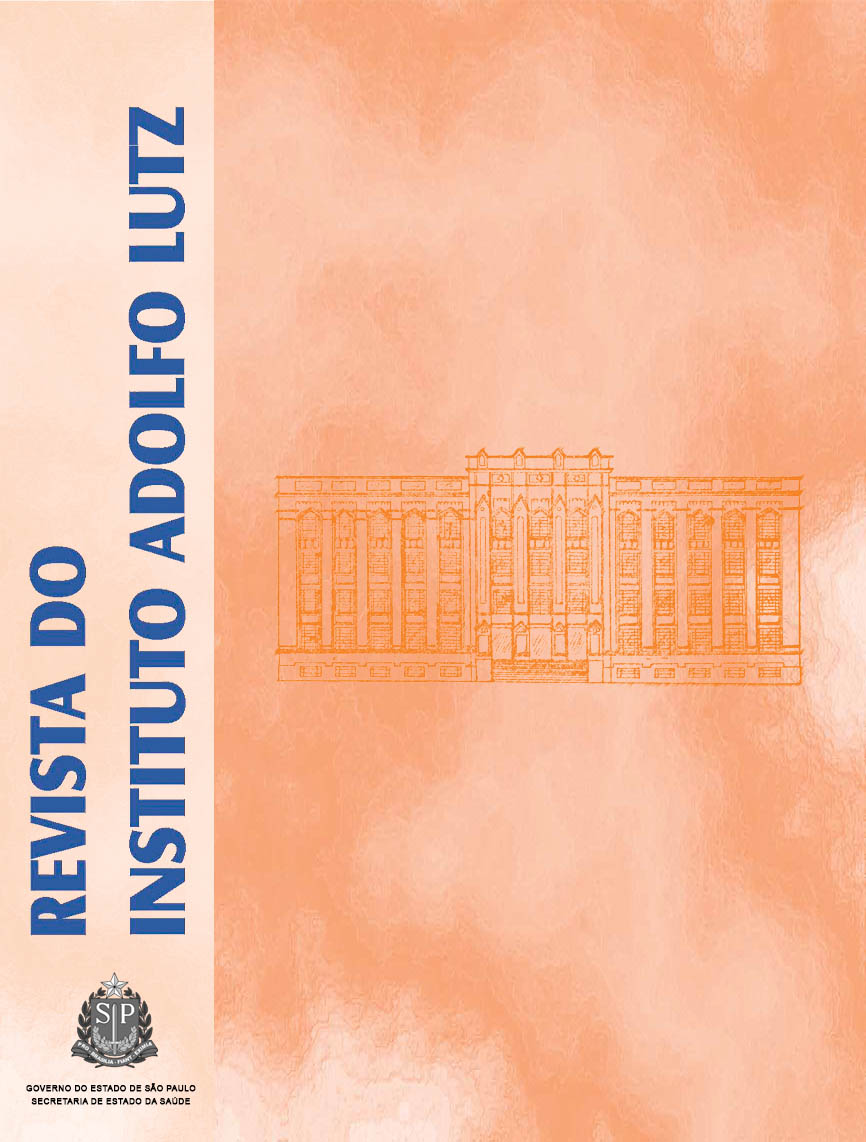Abstract
The stethoscope is widely used by doctors and health professionals for clinical examination of patients, and this medical device can act as vehicle for transmitting microorganisms from a patient to another. Thus, the present study evaluated the prevalence of bacterial contamination on stethoscopes used in different health units in Santa Cruz do Sul, RS; the stethoscopes cleaning practices utilized by users; the degree of information of health professional on the cleaning and disinfection procedures. An observational cross-sectional and analytical study was conducted in 2011, analyzing 81 stethoscopes used by professionals in the pediatric and adult primary care units and intensive care units, and a specific questionnaire was applied. Of 81 stethoscopes, 96.2 % were contaminated, and Staphylococcus aureus was the most frequently found microorganism; and 55.2 % of professionals stated that they do the disinfection of the stethoscopes, being 58.8 % physicians and 52.3 % nursing professionals. Besides, 85.7 % of nurses and 64.7 % of physicians stated that they had not received any guidance on the stethoscopes cleaning and sterilization procedures from the institution where they work. The significant prevalence of bacterial contamination detected in the analyzed stethoscopes (96.2 %) demonstrates the occurrence of a potential risk of transmission of nosocomial infections.
References
1. Panhotra BR, Saxena, AK, Al-Mulhim, AS. Contaminated physician’s stethoscope – a potential source of transmission of infection in the hospital. Need of frequent disinfection after use. SaudiMed J. 2005;26(2):348-50.
2. Sanders S. The stethoscope and cross-infection revisited. Br J GenPract. 2005;55(510):54-5.
3. Wood MW, Lund RC, Stevenson KB. Bacterial contamination of stethoscopes with antimicrobial diaphragm covers. Am J Infect Contr. 2007;35(4):263-6.
4. Portugal. Ministério da Saúde.Programa Nacional de Prevenção e Controlo da Infecção Associada aos Cuidados de Saúde (PNCI). Lisboa. 2007. [acesso 4 Set 2010]. Disponível em: [http://www.acs.min-saude.pt/pns2011-2016/files/2010/07/PNCI-2007.pdf ].
5. Treakle AM, Thom KA, Furuno JP, Strauss SM, Harris AD, Perencevich EN et al. Bacterial contamination of the white coats of the health care workers. Am J Infect Contr. 2009;37:101-5.
6. Jones JS, Hoerle D, Riekse R. Stethoscopes: A potential vector of infection? Ann of Emerg Med. 1995;26(3):296-9.
7. Wright IMR, Orrt H, Porter C. Stethoscope contamination in the neonatal intensive care unit. J Hosp Infect. 1995;29:65-8.
8. Wenzel R. The economics of nosocomial infections. J Hosp Infect. 1995;31:79-87.
9. Oplustil CP, Zoccoli CM, Tobouti NR, Sinto IS. Procedimentos básicos em microbiologia clínica. 3ª. ed. São Paulo: Sarvier; 2010.
10. Callegari-Jacques, SM. Bioestatística. Princípios e Aplicações. Porto Alegre: Artmed; 2006.
11. Hair JF, Anderson RE, Tatham RL, Black WC. Análise Multivariada de Dados, 5ª ed. Porto Alegre: Bookman; 2005.
12. Hammer O, Harper DAT, Ryan PD. PAST: Paleontological Statistics Software Package for Education and Data Analysis. Palaeontol Electr. 2001;4(1):1-9.
13. Saloojee H, Steenhoff A. The health professional’s role in preventing nosocomial infections. Postgrad Med J. 2001; 77: 16-9.
14. Xavier MS, Ueno M. Contaminação bacteriana de estetoscópios das unidades de pediatria em um hospital universitário. Rev Soc Bras Med Trop. 2009;42(2):217-8.
15. Zuliani Maluf ME, Maldonado AF, Bercial ME, Pedroso SA. Stethoscope: a friend or an enemy? São Paulo Med J. 2002;120(1):13-5.
16. Uneke CJ, Ogbonna A, Oyibo PG, Onu CM. Bacterial contamination of stethoscopes. J Infect Dev Ctries. 2010;4(7):436-41.
17. Mitchell A, Dealwis N, Collins J, Chew K, Taylor R, Schwab U et al. Stethoscope or ‘Staphoscope’? Infection by auscultation. J Hosp Infect. 2010;76(3):278-9.
18. Uneke CJ, Ogbonna A, Oyibo PG, Ekuma U. Bacteriological assessment of stethoscopes used by medical students in Nigeria: implications for nosocomial infection control. World Health Popul. 2008;10(4):53-61.
19. Camello TCF, Mattos-Guaraldi AL, Formiga LCD, Marques EA. Corynebacterium spp. isoladas a partir de espécimes clínicos de pacientes de Hospital Universitário, Rio de Janeiro, Brasil. Braz J Microbiol. 2003;34(1):39-44.
20. Youngster I, Berkovitch M, Heyman E, Lazarovitch Z, Goldman M. The stethoscope as a vector of infectious diseases in the pediatric division. Acta Paediatr. 2008;97(9):1253-5.
21. Paterson DL. Resistance in gram-negative bacteria: Enterobacteriaceae. AJIC. 2006;34(5):20-8.
22. Chau JP, Thompson DR, Lee DT, Twinn S. Infection control practices among hospital health and support workers in Hong Kong. J Hosp Infect. 2010;75(4):299-303.
23. Cohen HA, Amir J, Matalon A, Mayan R, Beni S, Barzilai A. Stethoscopes and otoscopes-a potential vector of infection? Fam Pract. 1997;14(6):446-9.
24. Madar R, Novakova E, Baska T. The role of non-critical helth-care tools in the transmission of nosocomial infections. Bratisl Lek Listy. 2005;106:348-50.
25. BRASIL. Ministério da Saúde. Coordenação de Controle de Infecção Hospitalar. Processamento de artigos e superfícies em estabelecimentos de saúde. 2ª ed. Brasília: Ministério da Saúde, 1994.

This work is licensed under a Creative Commons Attribution 4.0 International License.
Copyright (c) 2012 Instituto Adolfo Lutz Journal
